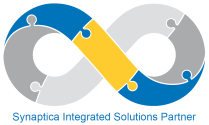Stephen Arnold, whose blog I enjoy due to its unabashed cynicism about overenthusiastic marketing of search technology, was kind enough to send me a copy of his recent report on CyberOSINT & Next Generation Information Access (NGIA), the latter being a term he has recently coined. OSINT itself refers to intelligence gathered from open, publically available sources, not anything to do with software licenses – so yes, this is all about the NSA, CIA and others, who as you might expect are keen on anything that can filter out the interesting from the noise. Let’s leave the definition (and the moral questionability) of ‘publically available’ aside for now – even if you disagree with its motives, this is a use case which can inform anyone with search requirements of the state of the art and what the future holds.
The report starts off with a foreword by Robert David Steele, who has had a varied and interesting career and lately has become a cheerleader for the other kind of open source – software – as a foundation for intelligence gathering. His view is that the tools used by the intelligence agencies ‘are also not good enough’ and ‘We have a very long way to go’. Although he writes that ‘the systems described in this volume have something to offer’ he later concludes that ‘This monograph is a starting point for those who might wish to demand a “full spectrum” solution, one that is 100% open source, and thus affordable, interoperable, and scalable.’ So for those of us in the open source sector, we could consider Arnold’s report as a good indicator of what to shoot for, a snapshot of the state of the art in search.
Arnold then starts the report with some explanation of the NGIA concept. This is largely a list of the common failings of traditional search platforms (basic keyword search, oft-confusing syntax, separate silos of information, lack of multimedia features and personalization) and how they might be addressed (natural language search, automatic querying, federated search, analytics). I am unconvinced this is as big a step as Arnold suggests though: it seems rather to imply that all past search systems were badly set up and configured and somehow a NGIA system will magically pull everything together for you and tell you the answer to questions you hadn’t even asked yet.
Disappointingly the exemplar chosen in the next chapter is Autonomy IDOL: regular readers will not be surprised by my feelings about this technology. Arnold suggests the creation of the Autonomy software was influenced by cracking World War II codes, rock music and artificial intelligence, which is in my mind adding egg to an already very eggy pudding, and not in step with what I know about the background of Cambridge Neurodynamics (Autonomy’s progenitor, created very soon after – and across the corridor from – Muscat, another Cambridge Bayesian search technology firm where Flax’s founders cut their teeth on search). In particular, Autonomy’s Kenjin tool – which automatically suggested related documents – is identified as a NGIA feature, although at the time I remember it being reminiscent of features we had built a year earlier at Muscat – we even applied for a patent. Arnold does note that ‘[Autonomy founder, Mike] Lynch and his colleagues clamped down on information about the inner workings of its smart software.’ and ‘The Autonomy approach locks down the IDOL components.’ – this was a magic black box of course, with a magically increasing price tag as well. The price tag rose to ridiculous dimensions (even after an equally ridiculous writedown) when Hewlett Packard bought the company.
The report continues with analysis of various other potential NGIA contenders, including Google-funded timeline analysis specialists Recorded Future and BAE Detica – interestingly one of the search specialists from this British company has now gone on to work at Elasticsearch.
The report concludes with a look at the future, correctly identifying advanced analytics as one key future trend. However this conclusion also echoes the foreword, with ‘The cost of proprietary licensing, maintenance, and training is now killing the marketplace. Open source alternatives will emerge, and among these may be a 900 pound gorilla that is free, interoperable and scalable.’. Although I have my issues with some of the examples chosen, the report will be very useful I’m sure to those in the intelligence sector, who like many are still looking for search that works.














